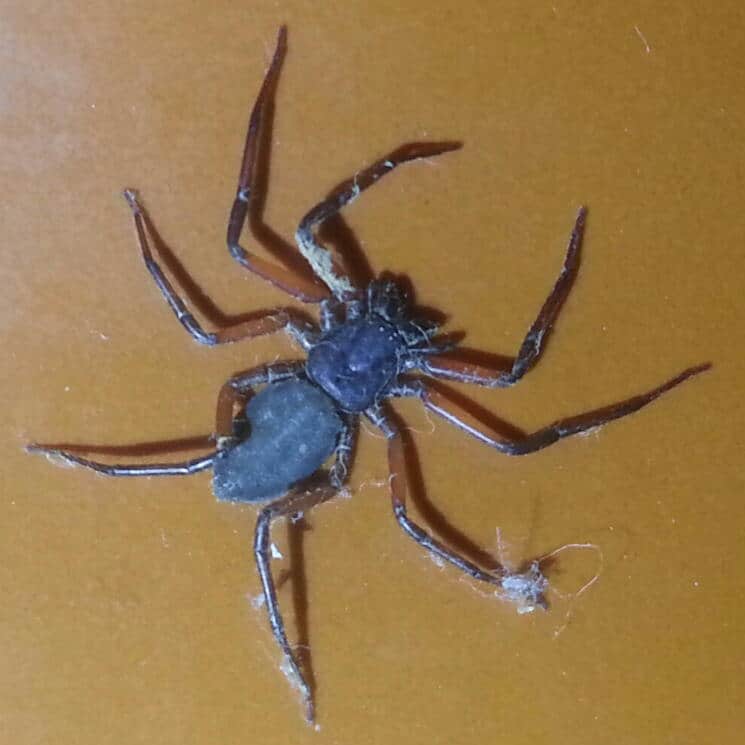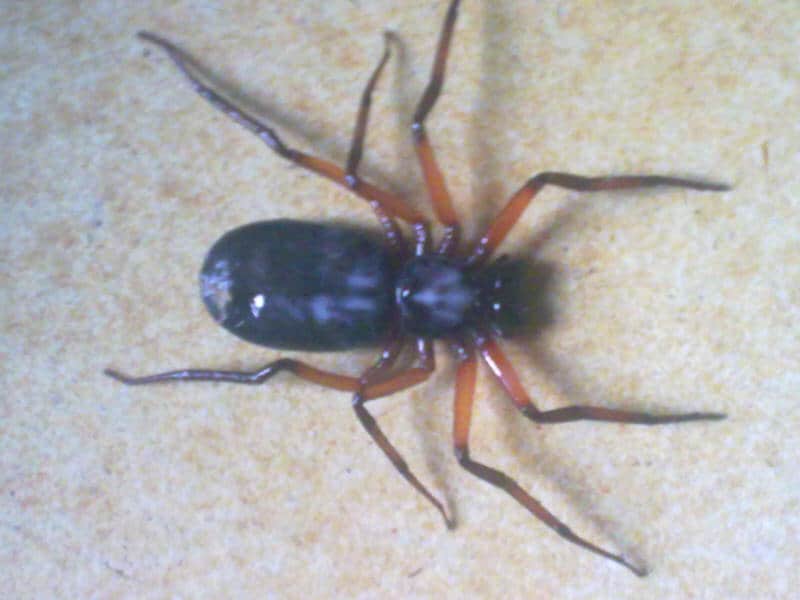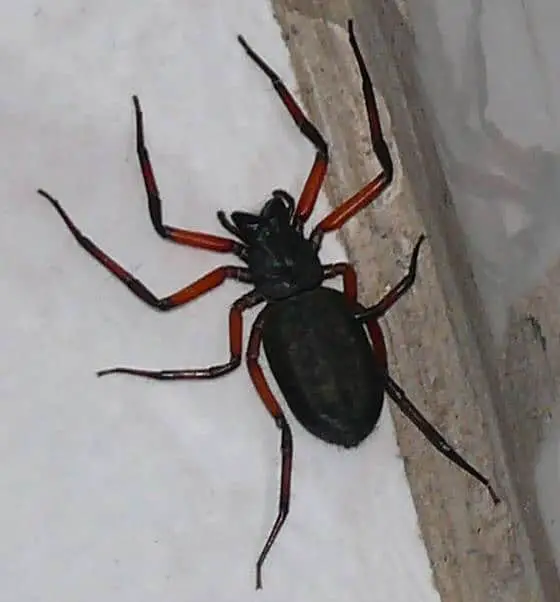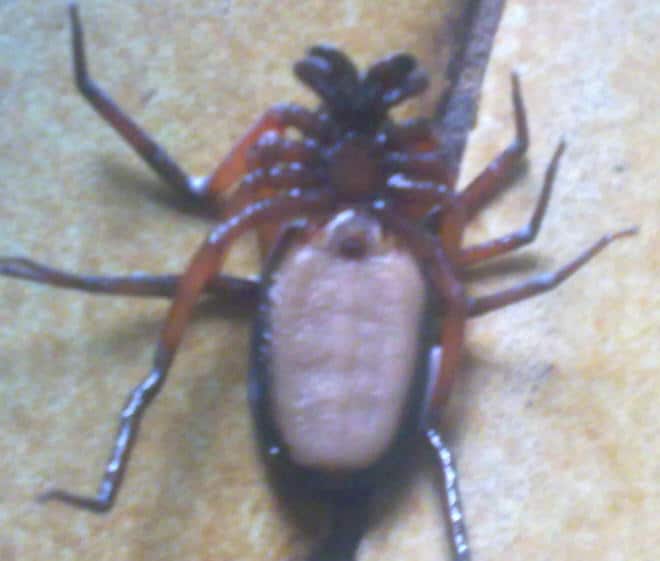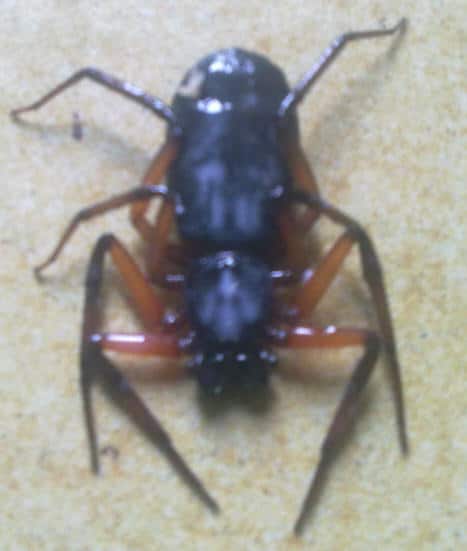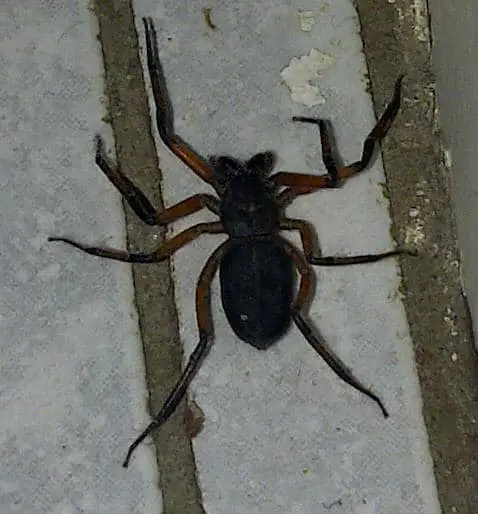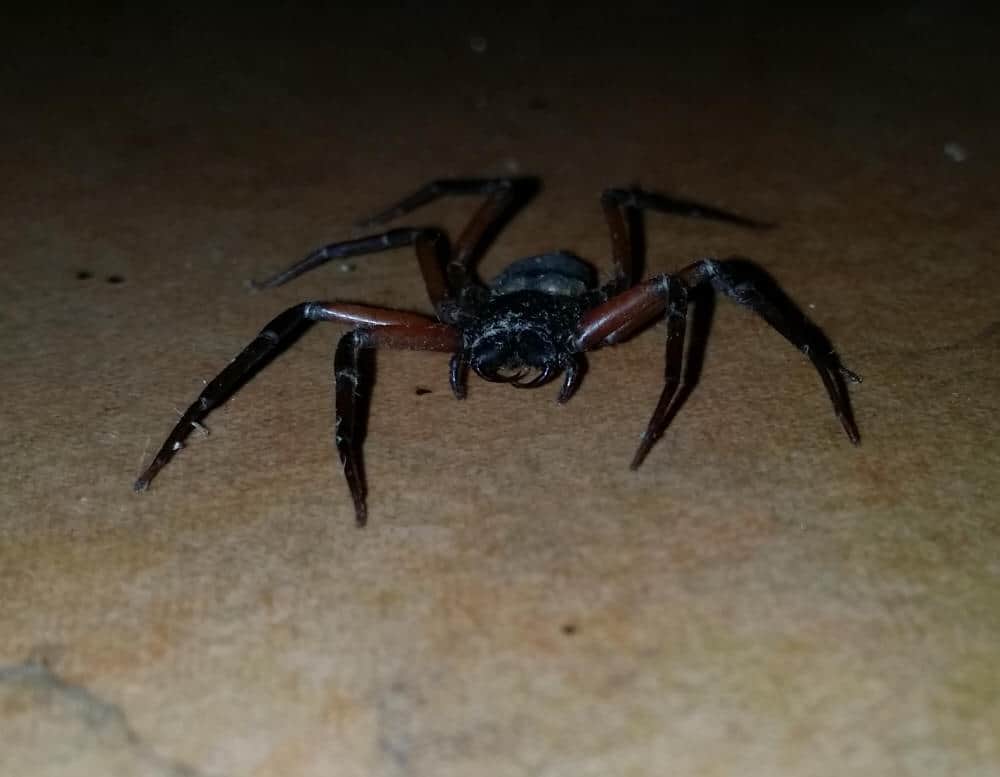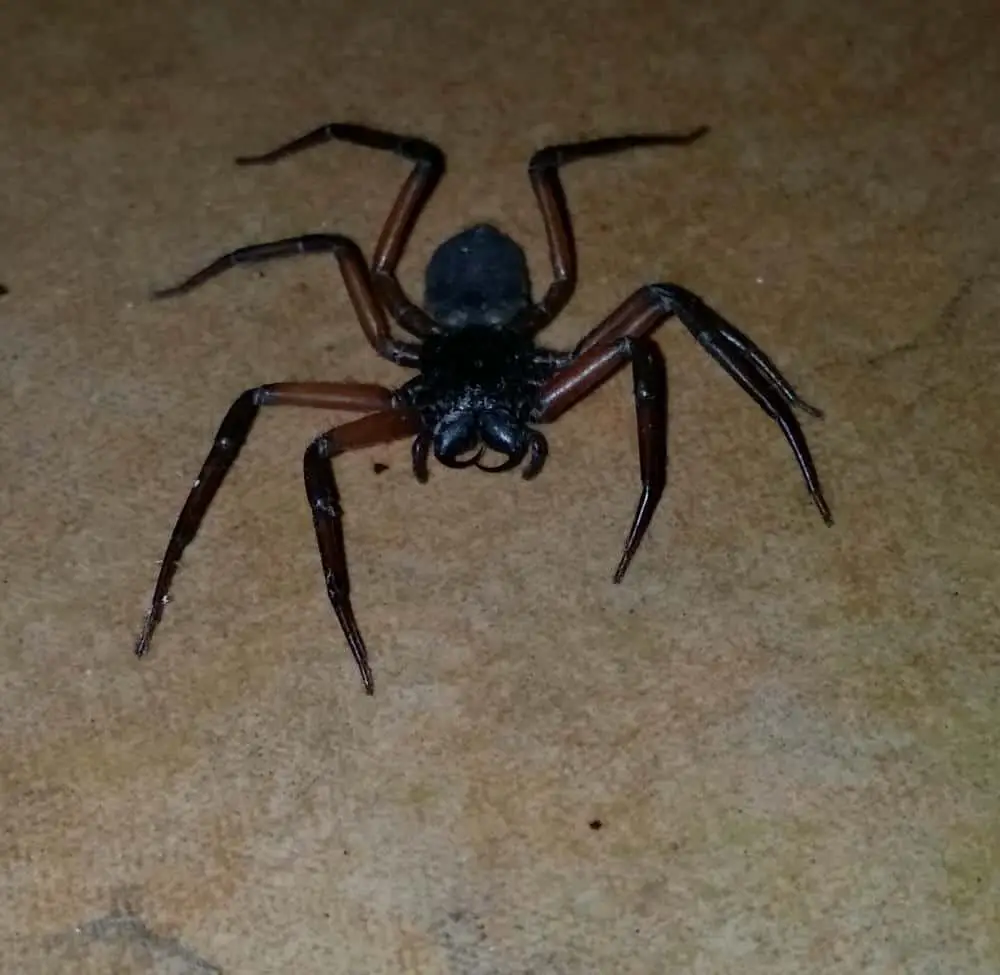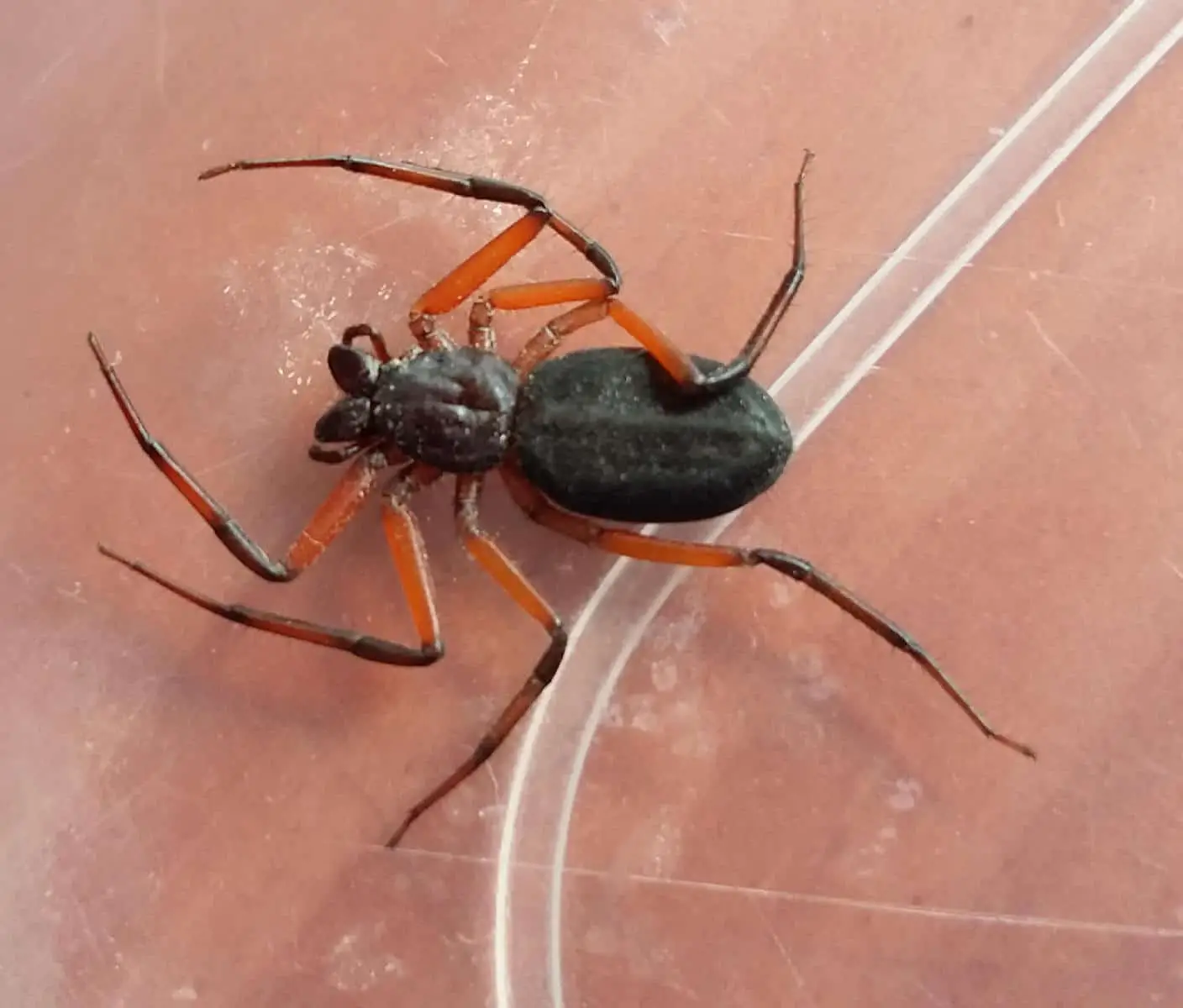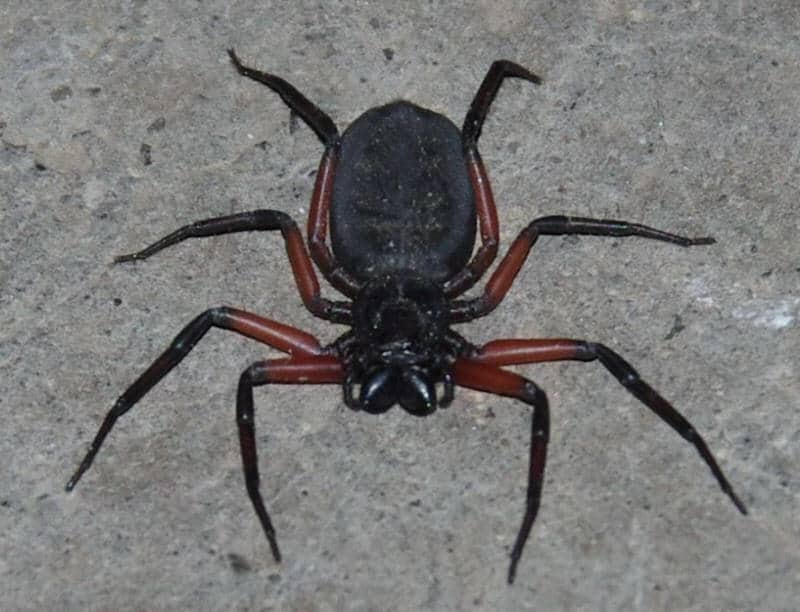On this page, you can find some information as well as Scorpion/Flat Rock spider photos. This species is typically brown to black in colour to match the bark it hides under. It has a flattened body with an elongate oval abdomen from which two pairs of wide-set spinnerets can be seen from above. The legs curve forward in a fashion somewhat similar to that seen among huntsman species.
Note that Hemicloea species can be seen to have three pairs of finger-like spinnerets when viewed from underneath whereas those members of the Family Trochanteriidae that resemble Hemicloea in overall appearance have two very short pairs of spinnerets and a central pair of parallel rows of silk-secreting spigots. In addition, the outer segments of the first two pairs of legs on the trochanteriids have visible spines whereas the legs of Hemicloea species only have some fine hairs.
Spider(s) with a very similar appearance: Some trochanteriids, especially Morebilus fumosus and some related Rebilus and Morebilus species. These flat spiders with an ovoid abdomen can be found in the drier parts of Australia. The genus Rebilus is related to this genus and the spider are similiar in appearance. The distinctive difference are the number of spinnerets, Hemicloea has 3 pairs of spinners and Ribelus two pair. The female spider is 9 to18 mm long, the male is smaller and between 7 – 12 mm. The spider has eight eyes in two rows. These spiders make a circular white disc as egg-sacs with a diameter of 20 -30 mm. In each of the three or four sacs 50-80, 1.2 mm large eggs, are laid. They hide under bark and stones.
All photos are copyright to their owners and may not be reproduced without permission.

